Undone Science: When Research Fails Polluted Communities
It was nearly 30 years ago when Debbie Blackburn and her husband Scott bought a boxy, postwar house six blocks from the Ohio River in Avalon, Pennsylvania. The town’s western edge skirted the river, where barges and tugboats plied the gray water and an island held a clutter of rusting factories, but the place seemed to have its charms. Situated six miles from downtown Pittsburgh, Avalon had the look and feel of an idyllic blue-collar community: a population of nearly 6,000 reasonably priced vintage homes, leafy trees, decent schools, and the nearby glimmer of the river itself.
Then there were the flames. The couple first spotted them from the porch, lighting up the early evening sky over the river not long after they’d moved in. Concerned that someone’s house was ablaze, they started walking quickly toward the water, wondering if they should call the fire department. When they stopped and asked some neighbors what was going on, the reply was flat: “Oh, that’s just the plant on the river,” Debbie recalls hearing. “It always does that.”
Debbie remembers now being surprised by their nonchalance, though she didn’t question it. As a busy home health care nurse, she and Scott — a manager at a local Pizza Hut — were too focused on other things, including fixing up their new home. Later, after her sons were born, Debbie says she would think back to the industrial light display and wish that she had recognized it as a warning sign.
The flames that caught the Blackburns’ attention were actually a routine part of the plant’s operation — a process known as “flaring,” which burns off flammable gas coming from the facility’s looming industrial flues. The plant’s primary purpose was coke manufacturing — essentially the production of purified coal used as fuel to make steel. The facility sat on the southern tip of Neville Island, a narrow channel of the Ohio River separating it from Avalon.
The original owners, Davison Coke and Iron Co., built the first coke ovens there in 1929, and soon the demand was so great that the company doubled the number of ovens to 140, each of them designed to heat metallurgical coal (a type low in sulfur and phosphorus) to a blazing 2,000 degrees Fahrenheit in order to turn it into coke. And as far back as the early 1950s, newspaper records show, residents of Avalon and neighboring communities had complained about the pollution — a cloudy mix of gases and particulates, drifting into the neighboring communities, carried by river breezes.
Even then, residents frequently called local government officials, worrying about a laundry list of environmental insults: a permanently hazy skyline; specks of a black tar-like substance that stuck to front porch furniture, car hoods, window frames, and laundry; and the sharp tang of odors described as “sulfur-y” and “like burning rubber” — sometimes strong enough to wake residents in the middle of the night.
But in the 1950s, that’s just the way it was in Avalon. Congress would not pass the Clean Air Act until 1963, and it wasn’t until 1970 that the U.S. Environmental Protection Agency was created — almost forced on government by pressure from increasingly alarmed citizens, fretting over hundreds of Avalon-like situations across the country.
By 2008, the Shenango Coke Works had been sold by its local owners to DTE Energy, a Detroit-based company. The workforce, which had once topped 500, slipped to about 160, and while the downturn did slightly decrease the waft of dirty air that the factory seemed to release without stop, residents of Avalon and neighboring communities — like many communities around the country — had become increasingly aware of the potential impacts of industrial pollution on public health. On their health.
The problem, as Debbie Blackburn and her neighbors tell it, is that no one else seemed to care — despite the fact that the EPA has described coke oven emissions as “among the most toxic of all air pollutants.” Decades of citizen queries, complaints, and requests led to air-quality monitoring of some pollutants, and to a study conducted between 2005 and 2008 that found the cancer risk higher in Avalon than other parts of the county due in large part to benzene and other emissions from Shenango. But there was no coordinated monitoring of local illnesses over time, no grant-supported surveys cataloging residents’ illnesses, no graduate students collecting and analyzing urine and blood samples for pollution metabolites, none of the obvious signs of scientific concern.
Indeed, it would be years before the Blackburns and other residents would realize that their growing worries were actually part of a bigger and even more troubling story: the failure of the research community to put any real effort into understanding the environmental plight of communities like Avalon. There would be few answers about the risks, no transparency about what the exposure levels could mean, often no investment in studies that would provide even basic answers.
This pattern, this problem, facing communities like Avalon across the globe would eventually become so obvious that sociologists would give the aching void of uncertainty — one marked by inexplicable patterns of illness and an overwhelming sense of being dismissed by both officials and scientists — a simple name: “undone science,” a catch-all term that its coiners use to identify scientific questions that are “unfunded, incomplete, or generally ignored,” but that community groups and other on-the-ground stakeholders consider to be in woeful need of investigation.
We tend to remember the towns where the microscopes and sampling jars belatedly, but eventually, became prominent parts of the epidemiological tableau. But for every Flint, Michigan and every Woburn, Massachusetts, there are perhaps hundreds of Avalons.
“The textbook way science gets presented in the classroom is that science is this bright light that’s shining on tiny bits of the universe and uncovering all the truths,” says Scott Frickel, a sociologist at Brown University and a leading figure in this field of research. “It’s a very sort of enlightenment way of thinking about knowledge and ignorance, but what we, as sociologists, are doing is thinking about the politics of knowledge when it comes to science and how that results in what the public knows and what it continues not to know.”
They couldn’t know it, of course, but for decades, the Blackburns and their neighbors in and around Avalon raised their kids, ate their dinners, mowed their lawns, and gazed out from their porches right smack in the middle of undone science. The question they ask now is, just what would it take to get answers?
In 1991, Debbie and Scott had a 7-pound, 11.5-ounce baby boy they named Elliot. But from the start, there were signs that worried both the child’s doctors and his parents. Debbie had switched jobs and was working as a labor and delivery nurse, so she paid particular attention to his Apgar scores, assessments of the baby’s overall well-being done at one and five minutes after birth. Elliot received a 4 and a 6 out of a possible 10, the lowest Debbie had ever witnessed.
Then the little boy was diagnosed with a case of pneumonia that sent him directly to the neonatal intensive care unit.
When he was released a week later, rosy and well, Debbie felt relieved. That feeling didn’t last long. After returning home, she noticed Elliot seemed reluctant to meet her gaze; he would flick his dark eyes away whenever she looked down at him while he nursed.
More worrisome behavior followed, especially after Elliot passed his first 18 months. Transitions were extremely difficult for him — the toddler would become hysterical if Debbie didn’t give him plenty of warning before telling him it was time to leave the playground or get out of the bathtub. Once, the couple strapped him into his car seat at 11 p.m. and set off to drive all night to Virginia to visit Debbie’s mother, figuring Elliot would sleep most of the way — instead he screamed, cried, and thrashed. Despite his outbursts, though, Elliot was smart. At age 3, an avid watcher of the children’s program “Where in the World is Carmen Sandiego?” he learned the name of every country in the world and could produce the name if you simply pointed to a spot on a map.
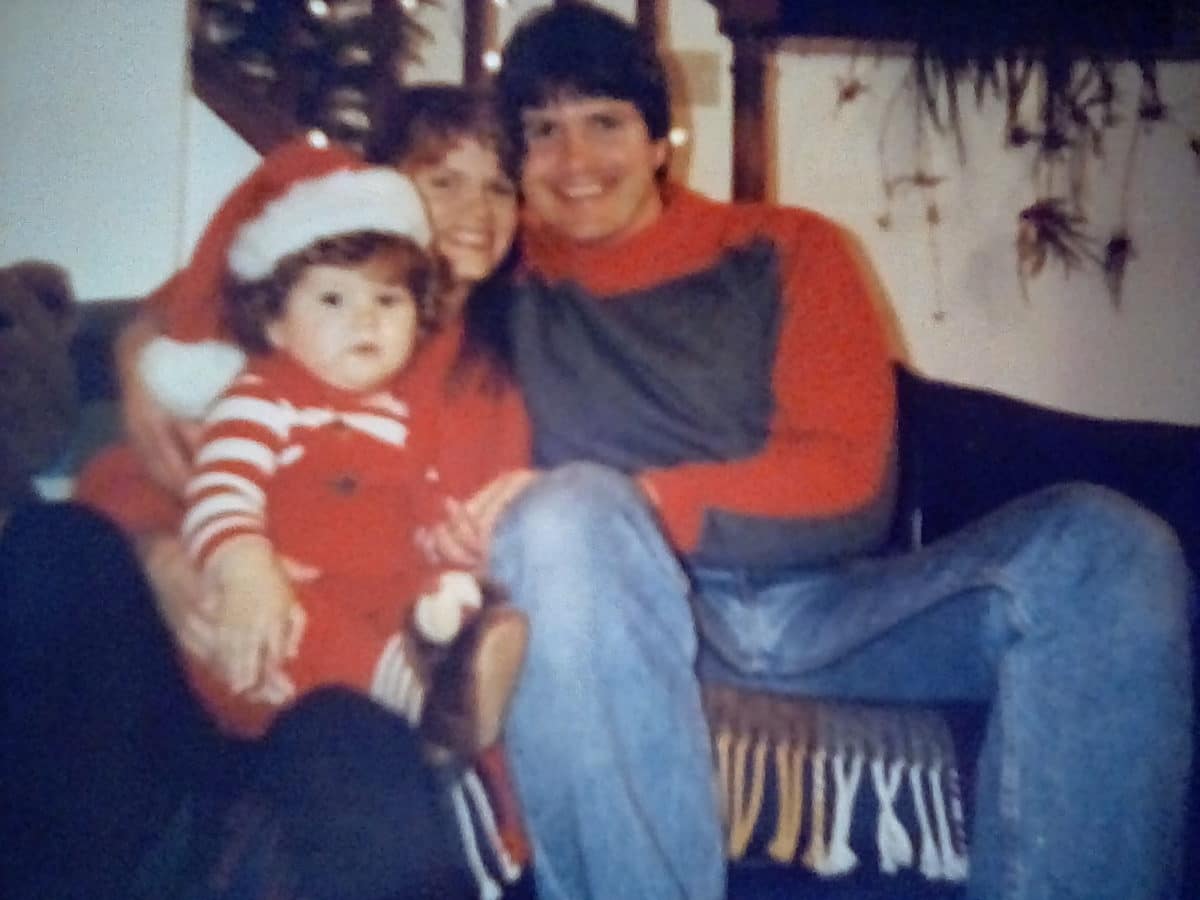
Debbie and Scott Blackburn with their son Elliot, celebrating Christmas in 1993.
Visual: Courtesy of Debbie Blackburn
When Elliot was still a toddler, Scott’s mother noticed some of his odd behavior and suggested they enroll him in the inclusive preschool where she worked. As part of the process, a child psychologist evaluated Elliot and informed the couple that he had developmental delays in six out of the eight categories that she’d tested him for. Debbie brought up these concerns with her pediatrician, but in the early 1990s, autism diagnoses were still rare, and Elliot’s pediatrician insisted he was fine — “just a little quirky,” Debbie says she was told. Elliot’s teachers also dismissed Debbie’s concerns. Finally, when the boy began have screaming episodes of anxiety, Debbie took him to see a therapist who suggested he might be on the autism spectrum and sent her to a local nonprofit that ran of battery of tests and formally diagnosed Elliot with the condition at age 9.
Long before that, Debbie says, Scott had begun to feel increasingly trapped by the responsibility of a family that included a special-needs child; the couple split up in 1996 when Elliot was 5. After that, Debbie worked as little as she could get away with so she could take care of Elliot. As he grew older, he began to pace and flap his hands, what autism experts refer to as self-stimulating behavior. A couple years later, Debbie bought a different house, this time in Ben Avon, a community adjacent to Avalon. Things were stable until she started dating someone new and found herself unexpectedly pregnant again.
The new baby’s father turned out to be an erratic, angry man, Debbie says, and she left him before her second son, Ben, was born. Again, to her dismay, the child seemed to struggle. Soon after Ben started kindergarten, his teacher called and told Debbie: “He’s not playing with the other kids. He’s not looking at me when I ask him questions. He’s spinning in the corner. He’s taking his clothes off. He’s making animal noises. I really think he should be evaluated.”
Ben was also diagnosed as being on the autism spectrum.
Struggling as a single parent to care for two children with disabilities, Debbie found herself asking countless questions. Had she done something wrong? Eaten the wrong foods? Argued too much with Scott? Was there some secret in her family history — her father, a physics professor, had some odd behaviors. Could she have an autism gene? She loved her boys dearly and feared for their future. Lying in bed at night, she turned these questions over and over in her mind — though she never really considered the nearby factories as a possible risk. Despite the stench and the smog, officials with the Allegheny County Health Department (ACHD) in Pittsburgh insisted that, in general, the air in and around Avalon was healthy to breathe.
It wasn’t until more than a decade later, when she joined the local citizens group Allegheny County Clean Air Now (ACCAN) in 2014, that Debbie learned that Shenango was frequently out of compliance with both local and federal emissions limits. Federal and county orders requiring the plant to fix pollution problems and pay punitive fines were issued in 1980, 1993, 2000, 2005, and 2012. The American Lung Association has consistently ranked the region’s air as some of the worst in the country.
Yet, officials did not publicize the problems, and the pollution continued unabated. In a 2016 audit of the ACHD, Allegheny County Controller Chelsa Wagner noted that the agency’s reliance on settlements and its hesitancy to impose maximum fines on facilities like Shenango meant that their operators could pay the penalties as the cost of doing business while continuing to pollute. As an example, for air quality violations that occurred on 330 days between 2012 and 2013, the ACHD fined the plant just $300,000 as part of a 2014 settlement, though it could have fined up to $8.2 million.
These revelations nagged at Debbie. Why hadn’t she done more research before settling in Avalon? Why hadn’t she and Scott looked into what those flames had meant when they noticed them shortly after moving in? Her house in Ben Avon, which she’d lived in while pregnant with Ben, had been further from the river and not as directly downwind from the plant as their starter home in Avalon where she’d been pregnant with Elliot. Was that why Ben had been affected somewhat less than his brother?
She wanted answers. She just had no idea how to find them.
In the new field of studying “undone science” — also sometimes called “the sociology of ignorance” or “the systematic nonproduction of knowledge” — sociologists investigate situations where scientific research is secret, incomplete, ignored, constrained, or simply not done. This despite the fact, or sometimes because of the fact, that citizens, advocacy groups, and often scientists themselves have deemed it worthy of wider pubic understanding. The Trump administration’s scrubbing of scientific data from numerous government websites has added another descriptor — “data justice” — into this new realm of research.
Vanderbilt University sociologist David Hess refers to lay people who organize to fight back against “undone science” as “mobilized publics.” In his 2016 book, “Undone Science: Social Movements, Mobilized Publics, and Industrial Transitions,” Hess notes that what often motivates the forming of such groups is that their actual experiences clash with the safety assurances that they hear from corporations or regulatory officials. “In other words,” he writes, “they are thinking, ‘I am sick, therefore, I doubt,’ or ‘I can smell the pollution in the air, therefore, I doubt.’”
Distrust started to creep into Debbie’s mind as the boys grew into teenagers and she finally had more time to herself. A friend mentioned in 2016 that the Pittsburgh region had one of the highest rates of autism in the state and that a University of Pittsburgh study published the previous year had shown that prenatal and early childhood exposure to a type of pollution known as fine particulate matter was associated with a 50 percent increased risk of a child developing autism. The study’s findings matched those of several others conducted around the same time in other parts of the country.
According to data from the American Lung Association, Pittsburgh is among the nation’s worst regions for fine particulate matter — also known as PM2.5 pollution. This refers to the fact that each particle has a diameter of 2.5 micrometers or less, some 30 times smaller than the width of a human hair. Such tiny particulates are among the most hazardous of air contaminants because they can lodge in the lungs and, potentially, enter the bloodstream doing further harm.
After she heard about the Pittsburgh paper, Blackburn began researching pollution in her area and eventually joined the Allegheny clean air group. The members included many people with a range of health problems that are sometimes linked to air pollution: a Ben Avon woman with adult-onset asthma, a nun who learned she had scarring on her lungs that occurred only after she’d moved back to the area, a younger woman who had run two marathons but, after moving to the area, found it hard to get up and down the stairs without an inhaler.
Could these conditions all be related to something other than air pollution arising from the Shenango plant? Might they be genetic, or linked to diet, or tied to some other environmental exposure in some other place, some other time? Of course. But because no one had ever bothered to study, over the years, the impacts of the plant’s emissions on this community, and on their health problems, there was no real way to know for sure.
“Why are they not doing what I thought was their job, which is to protect the local citizens?” Debbie wondered about the Allegheny County Health Department. “Who are they working for, if not us?”
For their part, ACHD officials have bristled in the past at such criticism. “Their gripe is that they don’t understand why we can’t immediately shut a [pollution] source down,” said Jim Thompson, then-deputy director of environmental health, to a BBC reporter in 2014, “and the problem is industry, you know, industry has their rights, too.”
If you study the fine print of the Clean Air Act, last updated in 1990, it can appear that the government has never been very interested in the regulation of coke plant emissions. First, Congress exempted the coke industry from some of the more stringent requirements applied to other industries. This includes an exemption from having to install pollution control measures such as a baghouse — a structure that takes in the polluted air and filters out most of the toxins before releasing it into the atmosphere — which is required for other air pollutant-producing industries.
Coke industry officials insisted that such pricey measures would end up costing jobs, so instead lawmakers stipulated that human inspectors would travel to these plants once a day to time emissions while the coke was baking and to check for oven leaks in order to ensure the pollution was minimal. In Blackburn’s neighborhood, the ACHD later added its own regulations aimed at keeping the “thickness” or opacity of the emissions to a minimum — the thicker the smoke coming out of the ovens, the more PM2.5 they contained.
But even with the additional inspectors, the air remained filthy. During the summer of 2013, for instance, residents learned that a valve that helped control some of the worst emissions had broken and the company would need to special order a new one. It would take 12 weeks to arrive, but Shenango continued to bake coke the whole time. “It was crazy,” says Ben Avon resident Karen Grzywinski. “They were basically allowed to pollute that whole summer.”
Up until that point, residents had been trying to work with the company through a mutually formed group called the Neville Island Good Neighbor Committee. But when Shenango officials refused to answer questions about the valve, the frustrated residents gave up on the “good neighbor” idea and quit to form Allegheny County Clean Air Now.
It would be several more years before Debbie started wondering — suspecting even — that the boys’ autism might be linked to the plant. She had no evidence to prove that, of course, but that lack of knowledge only amplified her fears. As she mulled over whether she should move and how such a change would affect Elliot and Ben, she began attending ACCAN meetings and soon members convinced her to tell her story at a public forum.
“I was scared,” she says. “But I noticed there were some people in the back who represented the plant and the county health department, and I thought, ‘I hope that they think about this. I hope they think about the effect their actions have on people’s lives because the challenges my boys face are forever.’”
Her certainty that pollution from the plant is to blame for her children’s troubles is, of course, unfounded. The nagging reality, however, is that she might also be right.
Recognizing what sociologists call “ignorance production” is far from easy. It requires thinking about what isn’t there, rather than what is. Frickel, for instance, used geographic information system, or GIS, mapping techniques to show that an EPA analysis of soil in New Orleans after the Hurricane Katrina floods had simply ignored several large areas in the city. The EPA had concluded that “adverse health impacts” from the contaminated soil were “unlikely,” though Frickel argues that the sampling was far from adequate for making such a conclusion. Instead, “several hundred small handfuls of dirt were collected, analyzed, aggregated, and made to speak for the environmental quality of an entire city,” he said.
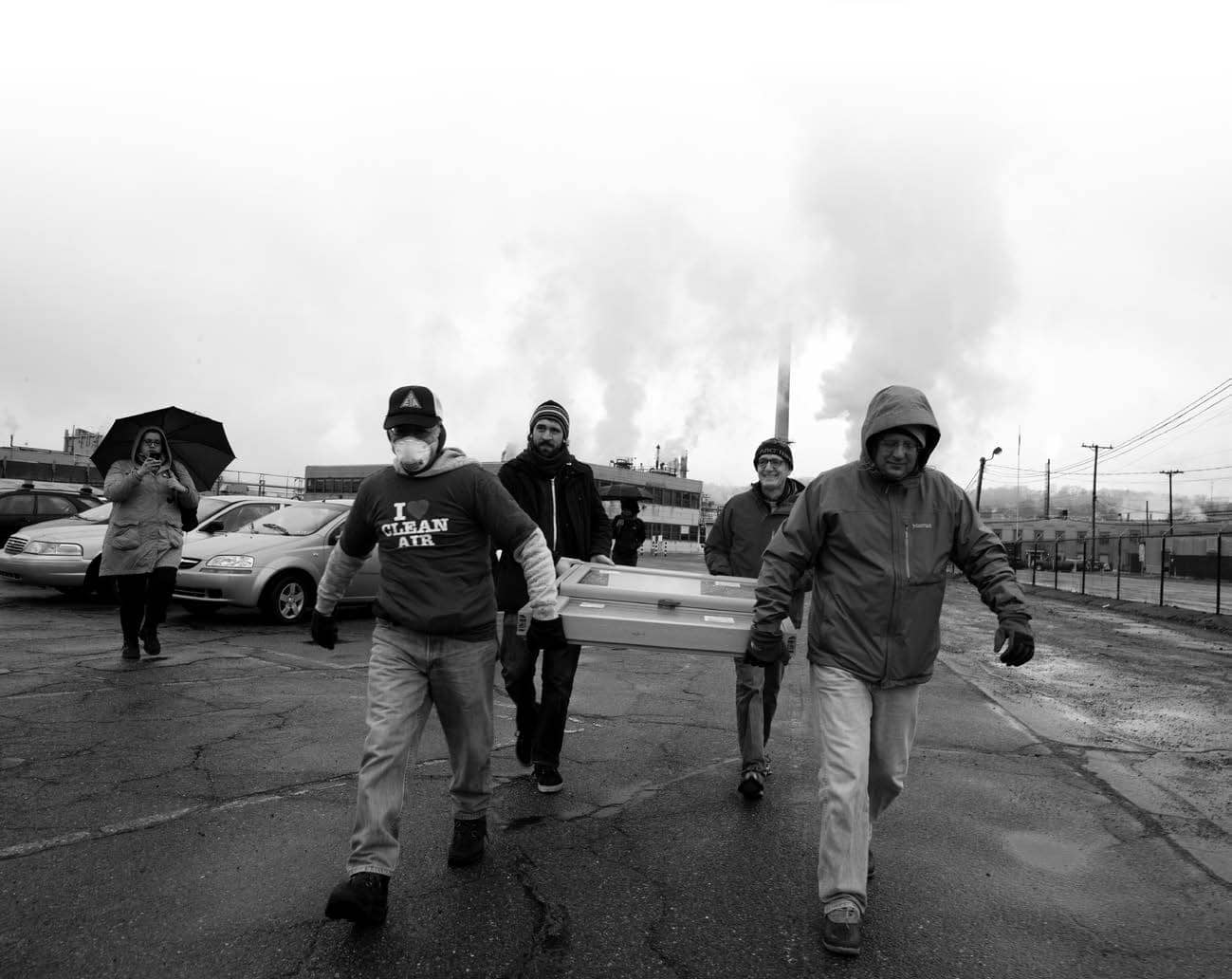
Most of the time, however, researchers learn about undone science from people who live near a polluting industry. Citizen groups like ACCAN have formed in cities across the country as residents begin to realize that important information is being withheld.
Drexel University associate professor Gwen Ottinger, who has written widely on the topic of undone science, studied residents in Norco, Louisiana, who were frustrated by the fact that state regulators only looked at 8-hour-average air samples when determining whether chemical emissions were at hazardous levels. The residents themselves challenged the practice, pointing out that short-term spikes — which can occur from gas flaring and venting, plant start-ups, malfunctions, and accidents, and can contain some of the most concentrated pollution — get missed. As one resident pointed out to Ottinger: “If you take the average temperature of water running over your hand, but for 30 seconds it is boiling hot, you still get burned!”
Like Avalon and Ben Avon, Norco is one of a number of places across the United States — and the globe — whose residents have found themselves trapped by official insistence on leaving scientific questions unexplored. In France, after years of complaining to local officials about illnesses arising from surrounding industrial emissions, a grassroots, community-based, and epidemiologically-rigorous research survey in the villages of Fos-sur-Mer and Port-Saint-Louis-du-Rhône recently made the case concrete: Residents of the two towns had statistically higher rates of adult-onset asthma, type 1 diabetes, and cancer than other areas of France. They also had an elevated presence of skin problems, eye irritation, nose and throat problems, headaches, and nosebleeds.
The findings, spearheaded by Virginia Tech University professor Barbara Allen, have given residents ammunition to fight the re-permitting of a huge garbage incinerator — and other communities in France are now trying to mount epidemiological surveys of their own. “You’ve heard of environmental justice right?” Allen says. “Well, this is knowledge justice.”
Still, the battle for knowledge can be daunting. In Pennsylvania, the state government has declined to keep a comprehensive database of fracking well and waste pit locations, thwarting attempts by epidemiologists to compare disease rates between fracking and non-fracking areas. In Wyoming, two state laws were passed — and later struck down by a federal court — to make it illegal to collect environmental data on public lands, preventing citizens from gathering air and water samples around oil and gas projects. And in northern California, the lack of government air monitoring around an oil refinery prevented nearby residents from knowing about a chemical leak at the plant that sent many to the hospital.
Most recently, residents of Reserve, Louisiana, have been battling the owners of a neoprene factory whose chemical emissions went largely unchecked for decades, even as local cancer rates skyrocketed. It was only in late 2015 that EPA officials publicly pointed a finger — to no one’s surprise — at the neoprene plant. The following summer, agency officials held a public meeting in Reserve to share agency research that showed that the community had the highest air pollution-related cancer risk in the entire country — by some estimates more than 800 times the national average in certain neighborhoods. The agency’s estimate was based on the fact that as part of its neoprene-making process the local plant emitted a chemical called chloroprene that the EPA had designated as a likely carcinogen in 2010.
“We were kind of shocked, really, hearing that this area had the highest risk for cancer and hearing about the chloroprene,” said Lydia Gerard, a resident whose husband died from kidney cancer in 2018. “We knew they were releasing something but no one knew what it was or how harmful it could be.”
At the Shenango plant, smoke inspectors came daily to fulfill federal and local requirements. The ACHD inspectors read the “opacity” levels of smoke leaking out of the coke ovens — anything darker than 20 percent opacity for three minutes or longer in any given hour, or darker than 60 percent at any time, was a violation.
Although the human eye has long been used by environmental agencies to measure emissions, it’s an inexact science at best. “Two people can look at the same [emissions] plume and come up with very different results,” says Ke Du, an engineering professor at the University of Calgary, who has patented a digital photographic method of measuring opacity.
Inspectors undergo a two-day certification process and are required to re-certify every six months. Yet even the most eagle-eyed are limited in what they can do since they must watch for potentially hundreds of leaks at one time. “It’s not perfect,” conceded the ACHD’s Kelly, “in that [inspectors] cannot see everything at all times.” What’s more, even though Shenango operated 24 hours a day, these inspections were never done at night because smoke opacity cannot be “read” in the dark.
But even with such caveats, it became clear that the smoke measurements at Shenango were far from adequate.
In 2014, Randy Sargent, a researcher at the Community Robotics, Education, and Technology Empowerment (CREATE) Lab at Carnegie Mellon University, set up a special camera on the banks of the Ohio River, directly across from Shenango. Sargent had heard complaints about the plant and had recently met some ACCAN members who had been performing volunteer smoke reading of Shenango’s emissions. The volunteers stood on the riverbank and wrote down the opacity of the emissions they saw and gave the data to the health department to inform its work — though they were never sure if it made a difference.
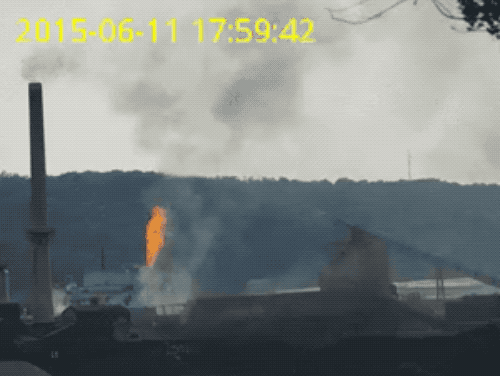
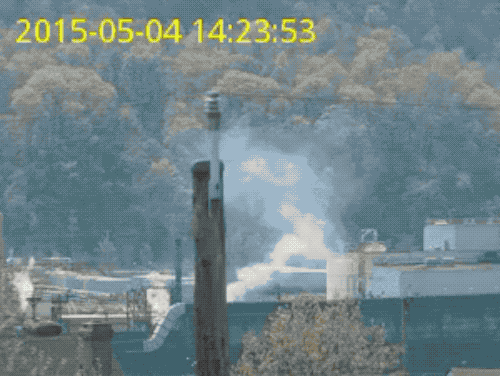
The camera’s technology — which Sargent had helped develop and which had been used to photograph Mars in the early 2000s — allowed it to take continuous high-resolution photographs then stitch them into a time-lapse video with the ability to zoom in or out, similar to Google Maps. On that day in 2014, the camera captured image after image of “fugitive” emissions — meaning they came from leaks or cracks in equipment rather than a smokestack.
“When you’re smoke-reading on the riverbank with the naked eye, every now and then you might see this big cloud of pollution,” Sargent says, “but you could only see it when it was big enough, and, by then, it was often pretty diffuse. But with the camera we could zoom in and say, ‘Okay here’s a particular emission and it came from this part of the plant.’” Soon the camera was placed in an ACCAN member’s attic window, snapping photos of the plant every five seconds, 24 hours a day, seven days a week that were then uploaded to a website called “The Shenango Channel.”
In November 2015, when ACCAN held its annual community meeting, a graduate student of Sargent’s played a loop of fugitive emissions caught by the camera, dismayingly clear on a big projection screen. ACCAN members had scored a coup by convincing David Arnold, then-EPA Region 3 acting head of air protection, to attend the meeting. For 30 minutes, while waiting for his turn at the microphone, Arnold had a view of the emissions loop.
When he got up to speak, the first thing he did was point to the screen and say: “This is totally unacceptable.”
Just a month later, DTE Energy announced that it was shuttering Shenango for good, citing changes in the marketplace that had made the plant unprofitable.
The day the announcement came, Debbie says she was relaxing in the recliner in her living room where she keeps a Himalayan salt crystal on the mantel. A nearby room is filled with house plants — two simple methods she employs in an effort to keep the air clean. She recalls reading her Kindle and going through emails when she spotted a striking subject line: “Merry Christmas Everybody! Shenango Coke Plant is Shutting Down.” At first, Debbie says she thought it was a joke, but as she scrolled through the excited responses from other ACCAN members, she realized it must be true.
“The plant is closing down!” she recalls proclaiming as she raced up the stairs to tell her boys. She found Elliot pacing and flapping his hands as he often did when he was worked up — though like his mom, he had a big smile on his face.
Debbie still doesn’t know whether the plant’s emissions caused her boys’ conditions — or even the rectal cancer she was diagnosed and for which she’s recently been undergoing chemotherapy — but she says she’s grateful for even the small victories that are won, including a study spearheaded by ACHD after the plant closed. Among other things, it showed that emergency room visits for asthma and chronic obstructive pulmonary disease dropped by 38 percent in the region the year after the plant closed. The researchers also found that levels of PM2.5 decreased by more than 10 percent and benzene decreased by 37 percent following the closure.
Meanwhile, social scientists who study undone science say they are heartened that the field appears to be blossoming in the academic world. Ottinger says she gets notifications as often as three times a week that a 2010 paper she co-authored with Frickel, Hess, and other colleagues on the topic has been cited by another researcher.
Smokestacks imploding at the former Shenango Coke Works in May 2018.
What that means for actual cases of environmental injustice on the ground is harder to say. The University Network for Human Rights, a non-profit that grew out of a collaboration among undergraduates at Stanford University and its law school’s Human Rights Clinic, recently conducted a new study among Reserve residents. Like the study done so effectively in France, it involved knocking on numerous doors and interviewing residents about cancer diagnoses in each home, and found that those surveyed within a mile of the plant had cancer rates of 6.7 percent; for those living just a little further away the cancer rate dropped to around 4 percent.
Not that such facts always get a hearing. In June of last year, two Reserve residents received funding from a non-profit to attend a shareholders meeting of Denka, the Japanese company now operating the Louisiana neoprene plant. The company denied them entrance to the meeting. And this, even optimistic sociologists acknowledge, is also part of the picture. The Denka plant in Reserve is the last operation in the United States to make neoprene and it remains profitable. (The company, which attacked the University Network for Human Rights study as scientifically flawed, pledged to cut chloroprene emissions by 85 percent; whether it has actually done so remains unclear.) To get a Shenango-like decision, takes the right economic winds, sympathetic regulators, and good timing — science, even well-done science, is not enough.
“When under-resourced or minority or at-risk communities gain access to knowledge that they need to pursue their claims in court or against the state or against industry or whatever, does that new knowledge actually affect the outcome?” says Frickel. “I’m not sure what the answer to that is. Sometimes it might. My suspicion is that more often than not, powerful interests with more resources can overcome hard-won environmental knowledge or data that communities work to get.”
Nancy Averett is an independent journalist who covers science and environmental issues from Cincinnati, Ohio. Her work has appeared in Discover, Audubon, Sierra, Yale Environment 360, TakePart, Environmental Health Perspectives, Pacific Standard, and many other outlets.










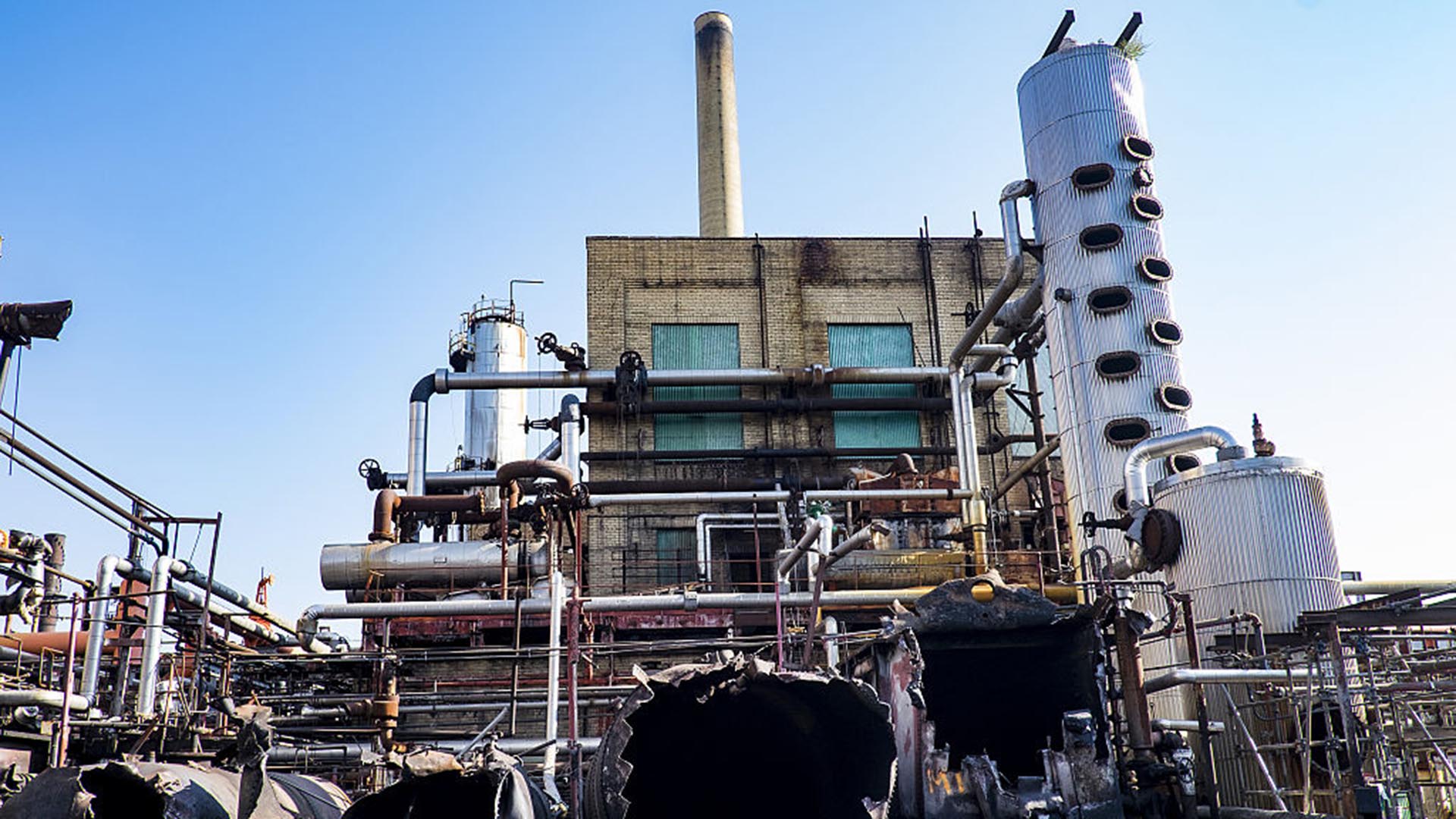

Comments are automatically closed one year after article publication. Archived comments are below.
Hello, there. I know this is off-topic, but I was wondering which blog platform are you using for this site? I’m getting fed up of WordPress because I’ve had problems with hackers and I’m looking at options for another platform. I would be fantastic if you could point me in the direction of a good platform.